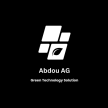Generative Adversarial Networks (GANs)
GANs are a type of neural network that can generate new data by learning from existing data. GANs have applications in image and video synthesis, as well as in creating realistic simulations.

Generative Adversarial Networks (GANs) are a type of deep learning model that have gained popularity in recent years for their ability to generate realistic images, videos, and other types of data.
At their core, GANs consist of two neural networks: a generator and a discriminator. The generator takes in random noise as input and generates samples of data, such as images. The discriminator, on the other hand, takes in both real samples of data and samples generated by the generator, and tries to distinguish between them.
During training, the generator tries to produce samples that are realistic enough to fool the discriminator, while the discriminator tries to correctly identify which samples are real and which are generated. This adversarial process leads to the development of a generator that can produce high-quality samples that are difficult to distinguish from real data.
One of the strengths of GANs is their ability to generate new data that is similar to but distinct from the training data. For example, a GAN trained on a dataset of images of dogs could generate new images of dogs that look like they could be from the same dataset, but are not exact copies of any of the original images.
GANs have been used in a wide range of applications, including image and video generation, image-to-image translation, and style transfer. They have also been used to generate synthetic data for tasks such as data augmentation and privacy-preserving data sharing.
However, GANs also have some limitations and challenges. One challenge is the difficulty of training stable and reliable GAN models, which can be prone to issues such as mode collapse and instability. Another challenge is the potential for GAN-generated data to perpetuate biases and other issues that exist in the training data.
Despite these challenges, GANs continue to be an active area of research and development in the field of artificial intelligence. As new techniques and models are developed, we can expect to see even more sophisticated and powerful GANs in the future.GANs were first introduced in a paper by Ian Goodfellow and his colleagues in 2014. Since then, they have become a popular topic of research in the field of deep learning, with many advancements and variations being developed.
One popular variation of GANs is the conditional GAN, which allows for the generation of data conditioned on some input, such as a text description or a style vector. This has led to applications such as text-to-image generation and style transfer.
Another variation is the Wasserstein GAN, which uses a different loss function than the original GAN and has been shown to produce more stable and higher-quality results.
GANs have also been used for tasks beyond generating images and videos, such as generating music and speech. They have also been used in unsupervised learning, where the generator and discriminator are both used to learn a compressed representation of the input data.
In addition to their practical applications, GANs have also been used as a tool for understanding the underlying structure of the data they are trained on. For example, researchers have used GANs to generate synthetic data that is used to train other machine learning models, allowing them to better understand the relationships between different features of the data.
Overall, GANs are a powerful and versatile tool in the field of deep learning, with a wide range of applications and potential for future development. While there are still challenges and limitations to overcome, the continued research and advancement in GANs is sure to lead to even more exciting and innovative applications in the future.
One of the key strengths of GANs is their ability to generate realistic and diverse data that is difficult to distinguish from real data. This is achieved by training the generator and discriminator in an adversarial manner, where the generator learns to generate samples that are similar to the training data and the discriminator learns to distinguish between real and generated samples.
One important aspect of GAN training is the choice of loss function. The original GAN loss function is based on the Jensen-Shannon divergence between the real and generated data distributions, but other loss functions such as the Wasserstein distance have been proposed to improve stability and performance.
Another important consideration in GAN training is the architecture of the neural networks used for the generator and discriminator. Recent advances in GAN research have focused on developing more efficient and effective network architectures, such as the Progressive GAN and StyleGAN, which can generate high-quality images with more control over the style and content of the generated images.
GANs also have a number of practical applications, such as generating realistic images for video games and virtual reality environments, generating synthetic data for training machine learning models, and improving image and video compression. GANs have also been used for data augmentation in medical imaging, allowing researchers to generate additional images to train models with limited amounts of real-world data.
However, there are also some limitations and challenges associated with GANs. One challenge is the difficulty of training GANs on complex datasets with high-dimensional input spaces, which can result in unstable training and poor-quality results. Another challenge is the potential for GAN-generated data to perpetuate biases and other issues that exist in the training data, which can have negative consequences in real-world applications.
Despite these challenges, GANs continue to be an active area of research and development in the field of artificial intelligence, with many exciting new applications and advancements expected in the future.
About the Creator
Abdou AG
Abdou AG is a writer and researcher who specializes in writing articles about artificial intelligence (AI). With a strong passion for technology and its potential to change the world, he has spent several years studying and writing about AI
Enjoyed the story? Support the Creator.
Subscribe for free to receive all their stories in your feed. You could also pledge your support or give them a one-off tip, letting them know you appreciate their work.






Comments
There are no comments for this story
Be the first to respond and start the conversation.